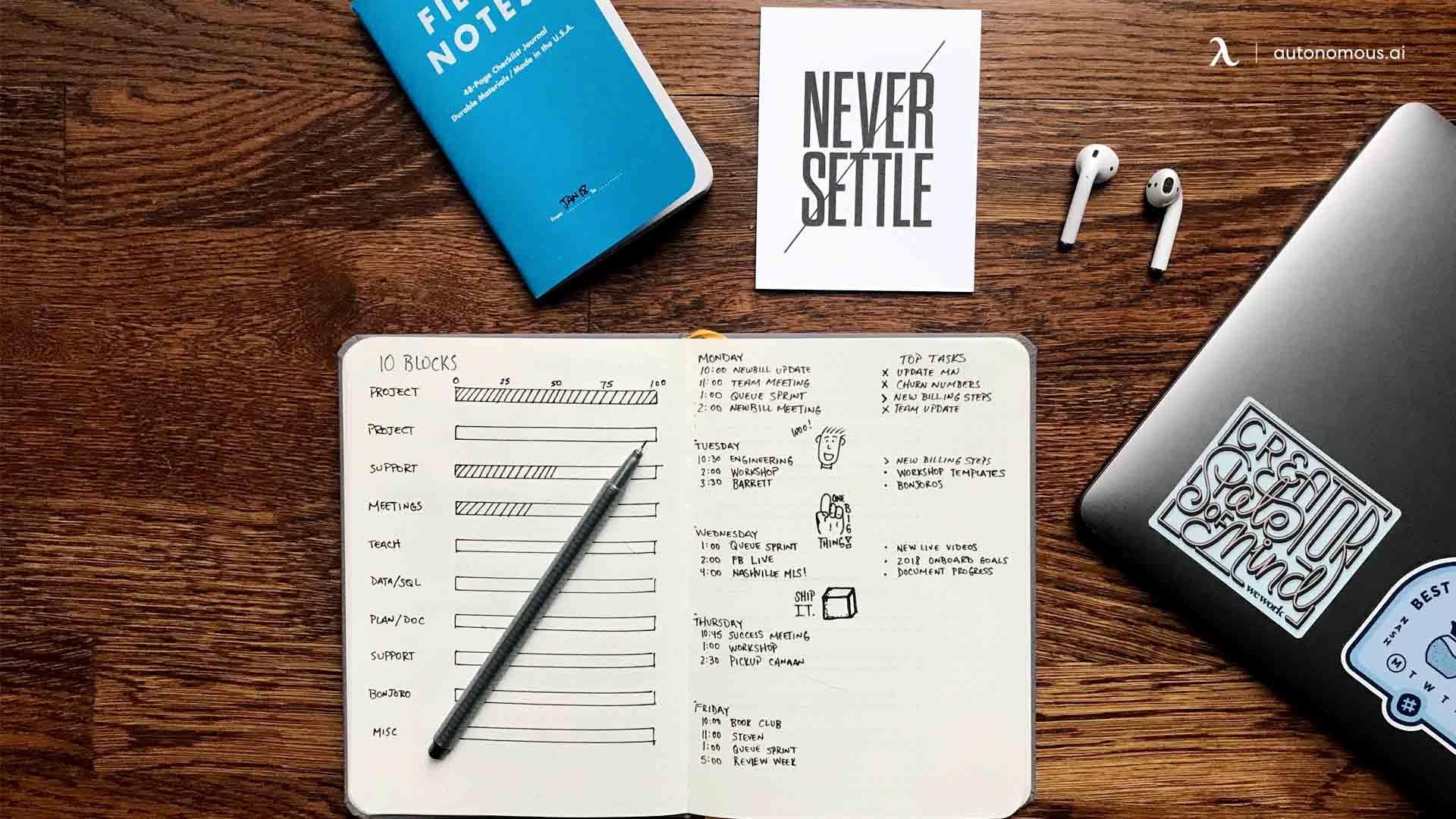/https://storage.googleapis.com/s3-autonomous-upgrade-3/static/upload/images/new_post/psychology-hacks-for-achieving-your-personal-goals-2101.jpg)
Psychology Hacks for Achieving Your Personal Goals
When you’re working with a team, there are usually clear team-wide and individual targets that employees must hit, with measurable indicators of whether that target is met. There is a plan to meet these targets, clear benefits if we meet that outcome, and clear consequences if we do not.
But what if you took your personal goals as seriously as your in-office goals?
One of the best ways to improve your productivity is to set goals, simply because very few of us take the time or trouble to ask ourselves where we are going and what directional improvements we would prefer. Although it is easy to find structure for your professional goals, it is also worth taking the time to clarify your personal aims, which has benefits for your personal wellness and mental health.
Unfortunately, many of us succumb to prioritizing professional goals over personal goals, and the person aims fall by the wayside. These small “failures” lead to many people beating themselves up and experiencing negative mental health consequences, even though they fell short on a goal they themselves set.
The good news is studies suggest that even by simply making a specific personal resolution, you are 10 times more likely to succeed in this goal. In addition, there are also a number of tricks and tips based on behavioral psychology that may support you in accomplishing your goal and being as happy, healthy, and productive as possible.
What are the most common personal goals?

In December 2019, YouGov conducted a poll to learn about Americans’ new year resolutions finding that the most common resolutions (where a person could have more than one) were:
· Exercise more (50% of all respondents had this goal)
· Save money (49%)
· Eat more healthily (43%)
· Lose weight (37%)
· Reduce stress (34%)
· Get more sleep (30%)
· Stick to a budget (30%)
· Focus on spiritual growth (28%)
· Travel more (25%)
· Learn a new skill (25%)
· Improve relations/spend more time with family (24%)
· Improve relations with partner (24%)
· Make more friends (19%)
· Spend more time volunteering (18%)
Interestingly, most Americans were quite confident they would stick to their resolutions through the following new year, with 77% of people saying they were ‘Very Confident’ (29%) or ‘Somewhat Confident’ (48%). However, only 7% of Americans said they stuck to their 2019 resolution throughout the whole year, and 76% reported that at least some of their resolutions were the same as from the previous year. (With 12% honest folks saying all of their resolutions were the same as the previous year.)
How can you succeed with your personal goals?

Value-Based Goals
Many people will set a concrete goal that is based on an action, not a value. For example, “I will go to the gym three times per week” or “I will call my grandparents once per week.” While this may work for some people, many people who miss even one of their intended actions will consider it a failure and give up altogether.
Instead, successful goal-setters will ground their objectives in the value that they wish to prioritize. For example, if you would like to feel and look healthier, focusing on this intention will naturally lead to more gym time as well as other healthy behaviors around food or drinking. Or, if you want to have closer relationships with your older family members, this intention will naturally lead to calling grandparents more often, in addition to more thoughtful activities and time spent with them.
Avoid Peer-Pressured Goals

Your goals are not “shoulds.” A “should” is something that usually comes from societal or peer pressure, such as “I should spend more time volunteering” or “I shouldn’t drink more than one glass of wine.” Often these “shoulds” become goals because it is what you think other people will want to see in you, but not because it’s part of your core belief system.
When you set an objective, it must be grounded in your true beliefs and values, otherwise it will be very easy to scrap when it gets a bit hard.
Measurable Goals

The reason so many people will bail on their personal goals after a month or two is because they have not seen any real change or progress in their life, so why would they continue a fruitless activity? Successful goal-setters will make their aim measurable so that they can begin to see progress along the way.
For example, an ineffective goal might be, “I want to be happier in the Springtime.” How can you measure happiness? And what happens when there is inevitably a bad day in the first few weeks of Spring?
Instead, be more specific with your personal aims so that you can measure whether or not progress has been made. For example, “I want to prioritize self-care and mental health by doing activities that make me happy more often.” Then, you will be able to notice how often per day or per week you take time for self-care activities that make you happy, eventually leading to the end goal of being a happier person.
Goals as a Destination vs. Journey

Even if you have a measurable goal, which is great, sometimes external circumstances will naturally come up that alter your ability to meet the goal, even though you were still making progress.
For example, if your objective is to earn a promotion by the end of the year, but then your company loses an important client for reasons beyond your control, your goal may get delayed. However, you may very well have been making progress toward that goal by showing up early, taking on challenging projects and demonstrating leadership.
Your efforts were not wasted just because an unanticipated barrier arises. Those skills will still be valued at your current job, or in future jobs. Just because the “destination” is pushed back, you should not abandon the progress made toward it, which is easier to do when you think of a goal as a “journey of behaviors” that will get you to the destination.
Remove All Obstacles

The most important factor in strategizing how to stick to your personal goal is to remove as many obstacles as possible. For example, if your goal is centered on fitness and going to the gym, you will really need to find a form of exercise you enjoy rather than forcing yourself to do activities you dread. Joining a soccer team or dance class may get you more excited about the idea of working out than pumping iron alone. If you are able to find enjoyment or excitement about the goal, you are much more likely to stick with it.
Furthermore, try to minimize any possible excuse you may have not to stick with your goal. Sticking with the gym example, you might decide to join the gym that is super close even if it’s a few dollars more expensive, since the gym further away is more likely to be an excuse not to go. Keep as much of your equipment/toiletries as possible in your gym locker so there’s no effort to prepare. Have dedicated times each week to go, so that nothing else is scheduled at the same time.
You will be glad in the end that you made your resolution as convenient and comfortable as possible.
Set Yourself Up for Success

If you plan to set a personal goal related to your work productivity and work-health balance, you may benefit from an ergonomic work space. Setting up an ergonomic and healthy work environment is one of the most important and noticeably beneficial ways to ramp up your focus, efficiency, and physical health related to work.
Sitting at a desk for hours at a time can lead to awful lower back, neck, and joint pain that only worsens over time. The effective goal-setter can benefit from standing desks, which have many health benefits and can even boost productivity. A standing desk from Autonomous is a great way to give the best of both worlds of sitting and standing, since desks can be used in either setting and make it super easy to switch modes.
Stay connected with us!
Subscribe to our weekly updates to stay in the loop about our latest innovations and community news!
Spread the word



/https://storage.googleapis.com/s3-autonomous-upgrade-3/production/ecm/230914/bulk-order-sep-2023-720x1200-CTA-min.jpg)

/https://storage.googleapis.com/s3-autonomous-upgrade-3/static/upload/images/new_post_author/molly-stoneman-27.jpg)